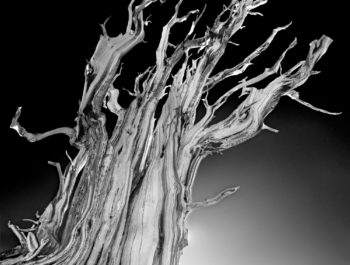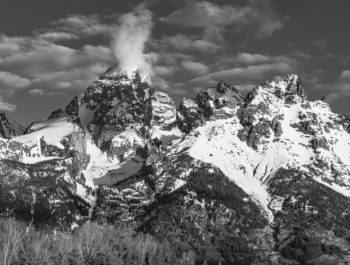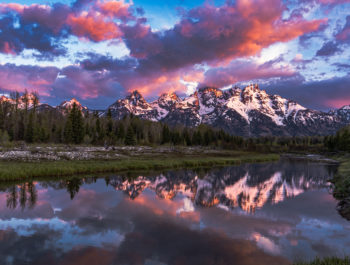Photograph Landscapes At Sunset Not Just Sunsets
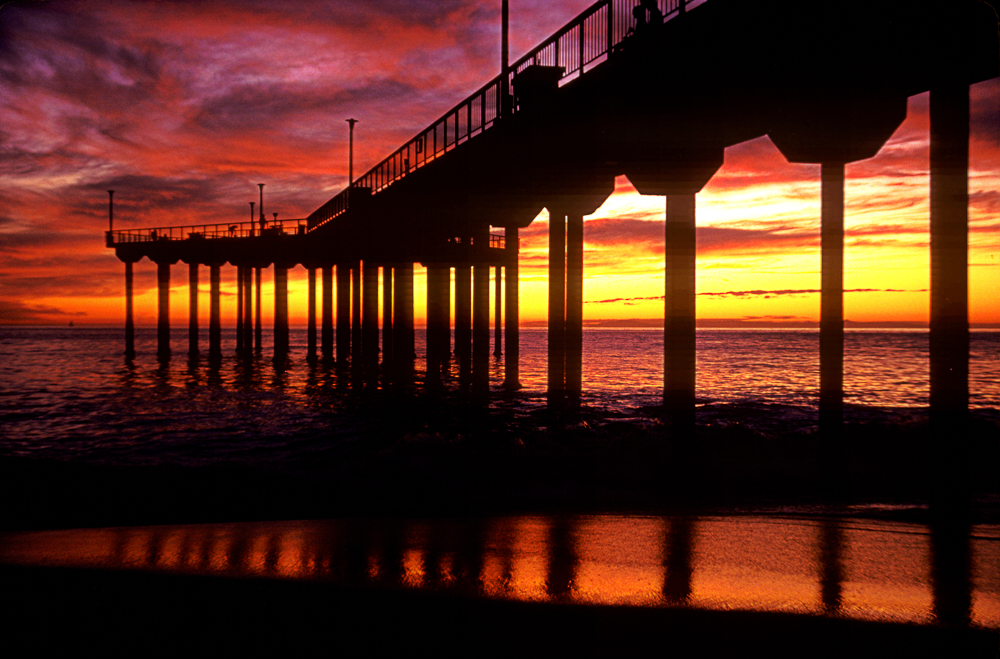
Sunsets rate among the most spectacular displays in Nature. Photographers at all skill levels reach for their cameras as soon as the sky starts reddening. The majority of these will aim their camera at the sky and shoot without thinking about alternative compositions. The truth is that very few sunsets are strong enough or unusual enough to carry the whole image exclusively without integrating them into a composition including other elements.
And it is also true that there is a range of landscape compositions that can be improved by incorporating different sunset effects to produce memorable photographs. Experienced photographers anticipate various sunset scenarios for specific sites so that they can take fully exploit them when conditions are right. The purpose of this article is to categorize these variations and create a simple checklist that can become part of the photographer’s mental approach to maximizing capture success in the brief timespan in which the setting sun does its magic.
Sunset drama is often generated by the ways the sun’s longer wavelengths are reflected by clouds. The visual effects depend upon the types and shapes of clouds, the amount of cloud cover, and whether the photographer is shooting toward the sun or away from it. The images in this article will illustrate many of these variations. However, equally important considerations are the extent to which landforms and earthbound objects become important parts of the photo compositions, and to what extent these react to red-shifted lighting. The following categories range from purely sunset skies to landscapes to which sunset effects provide modest accents or generate a specific mood.
The Whole Show
Once again, a sunset has to be sufficiently strong and unusual in order to make a compelling photograph when there is little else in the image. I’ve made very few of these in my 69 years of capturing outdoor scenes. Here are two images that reasonably qualify. But, even in these two cases there is a small amount of non-descript ocean showing to ground each image.
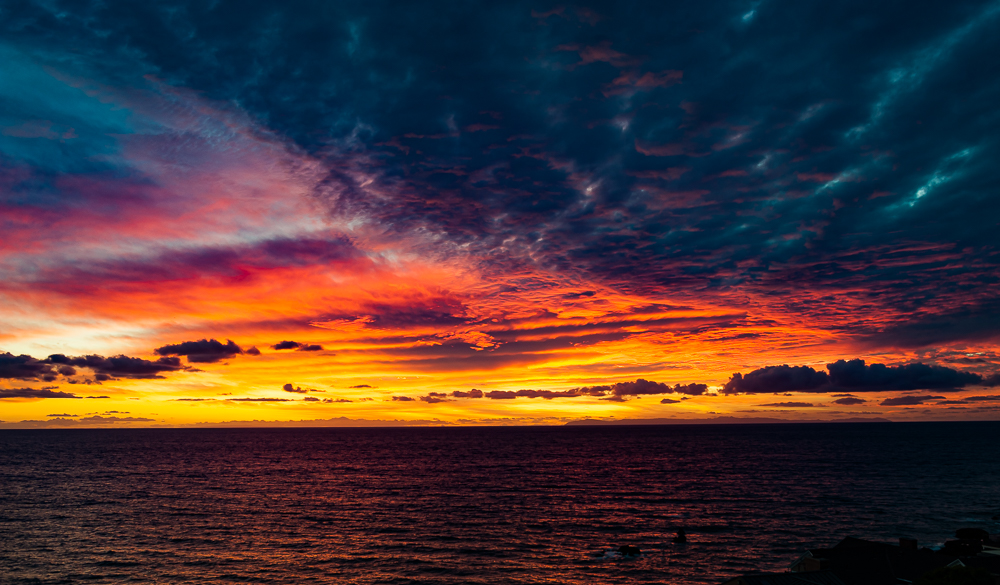
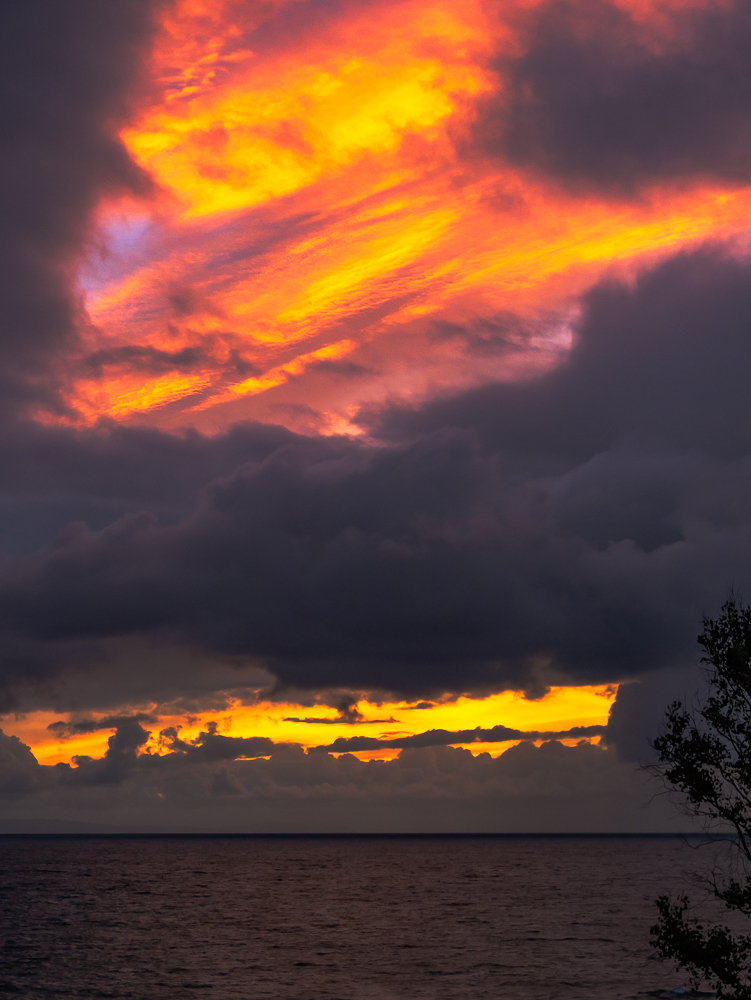
The first image shows a rare phenomenon in which the high background clouds reflect the usual warm wavelengths, while a different layer closer to the ground is in shadow and rendered blue by the average color temperature of the exposure.
The second image also features different cloud layers, with the closer ones in blueish shadow. However, the distant warm colors are divided into two areas with the upper one being wild and turbulent.
Sweeping Sunsets with Minor Land Forms
The primary difference between this category and the previous one is that an attempt is made to anchor the sunset to a recognizable though still minimal land area. A high percentage of sunset images made by casual photographers falls in this category, though such images can be stunning if the sky is sufficiently dramatic.
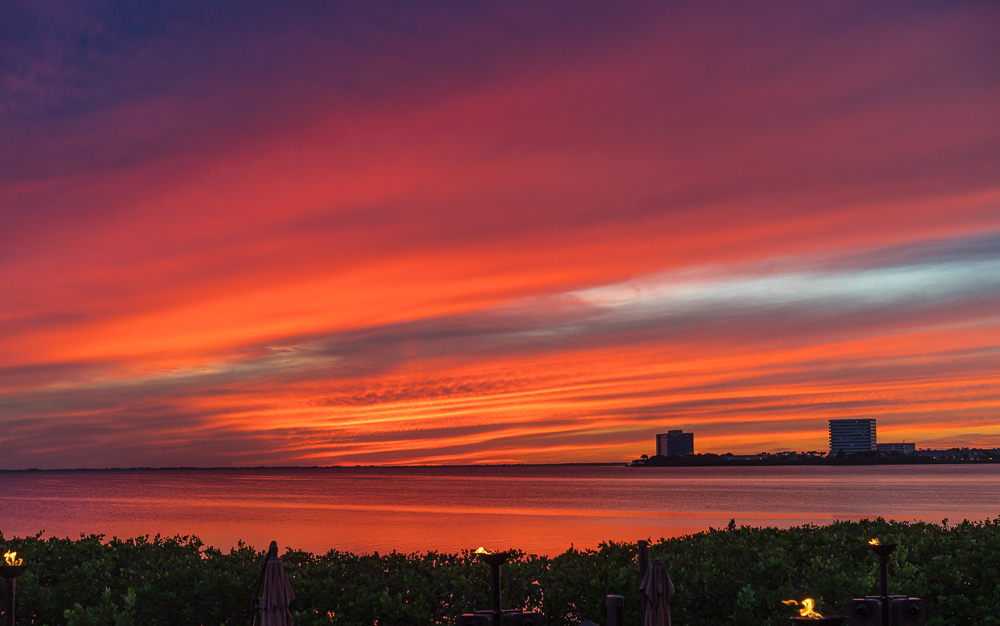
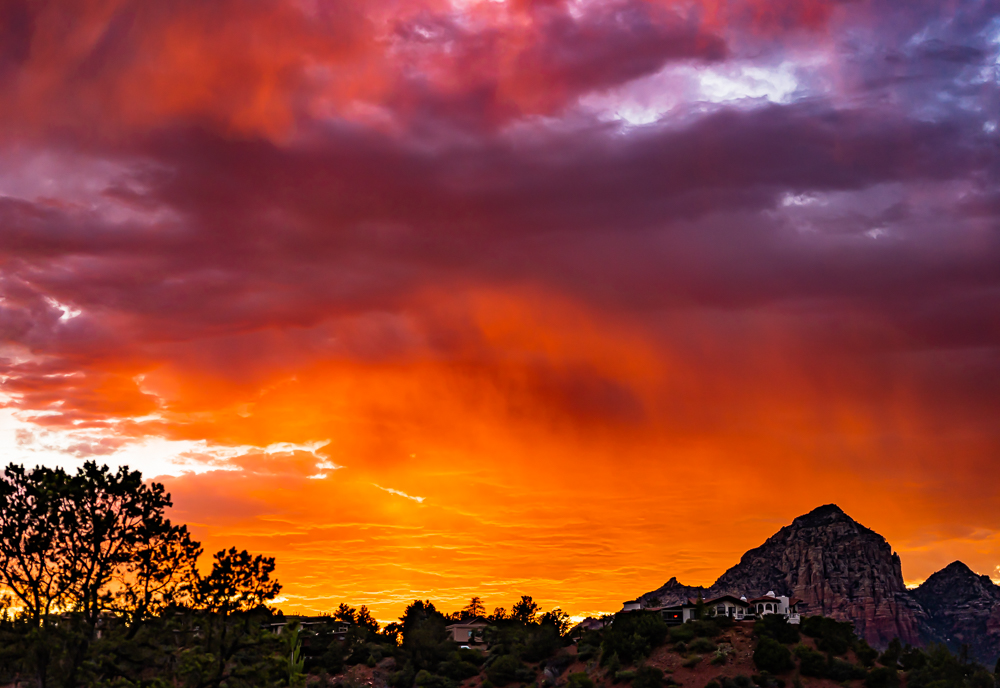
Sunsets as Major Elements
In this category, brightly lit reddish clouds in the sky, and interesting landforms and structures below are equally important to the composition. If you ask yourself whether you would take this shot without the sunset, the answer is likely to be “probably”.
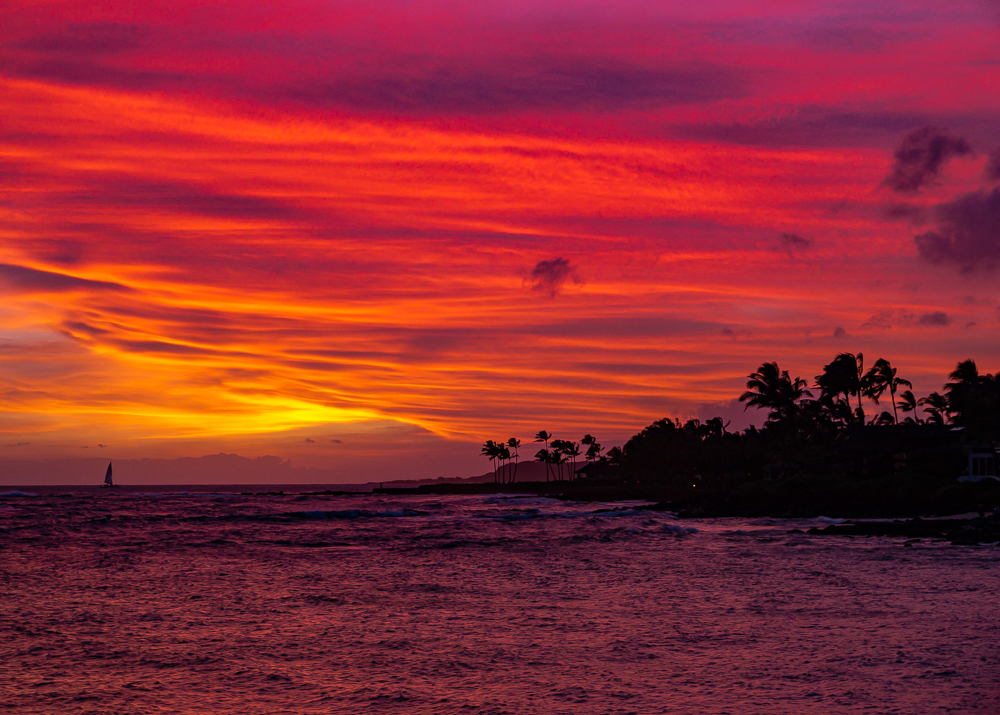
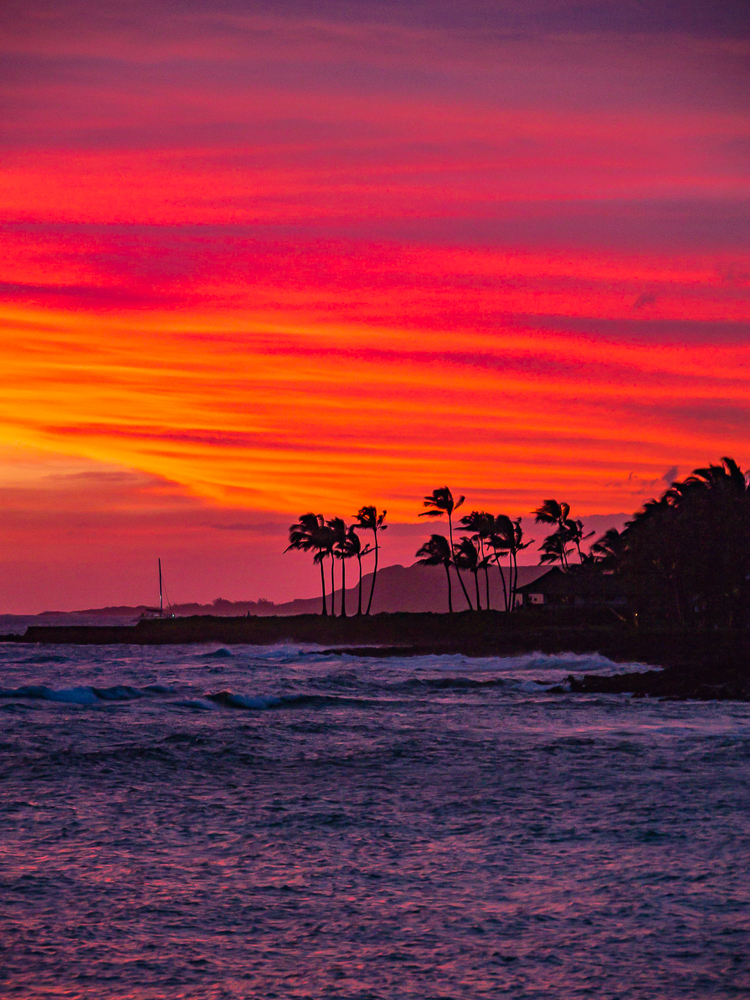
In the above two images, the sailboat and the village were both in silhouette. Nevertheless, both images read tropical islands loud and clear. They were taken toward the height of an amazing sunset that took an hour to evolve from beginning to end. There were no mediocre images, just great ones and superb ones, and a variety of compositions. These images were made almost ten years ago; and how I wish I could return to that exact scene with my present Sony A7rM4 61 MP camera!
The image immediately below is the one used as the lead-in for this article. It was taken on Kodachrome film in 1982 and features the graphic silhouette of the Aliso Beach pier. It is still one of the best sunset shots I ever took.

The next image is also a sunset at Aliso Beach taken from a different direction and a few months later. The green and yellow water reflections of the mercury and sodium vapor pier lights contrast sharply with the warm orange to magenta colors in the sky.
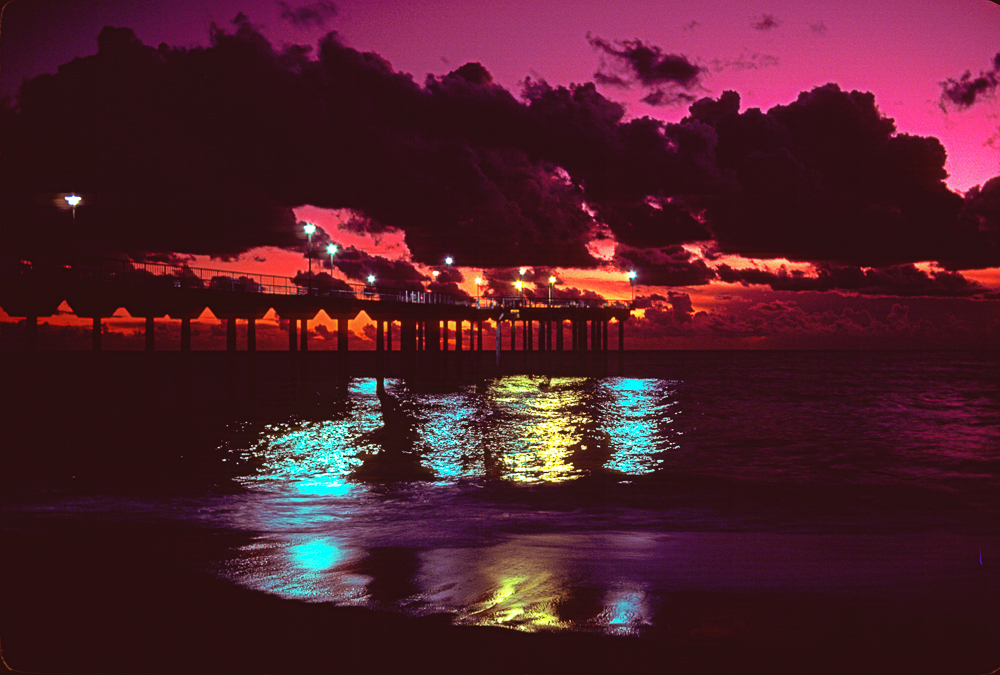
Both images feature a well-known structure that is as photogenic as the dramatic sky even though the pier is silhouetted and shows little detail. The two photographs are also historic because this pier was taken down in 1999 after being damaged by 20-foot waves; and it was never replaced.
The remaining four images in this category have unusual sunsets. And, again, the underlying landscapes are worthy of photographs even without such dramatic skies, which I had done often prior to these exposures. They are on my priority list to visit first whenever dramatic skies and lighting are likely to occur.

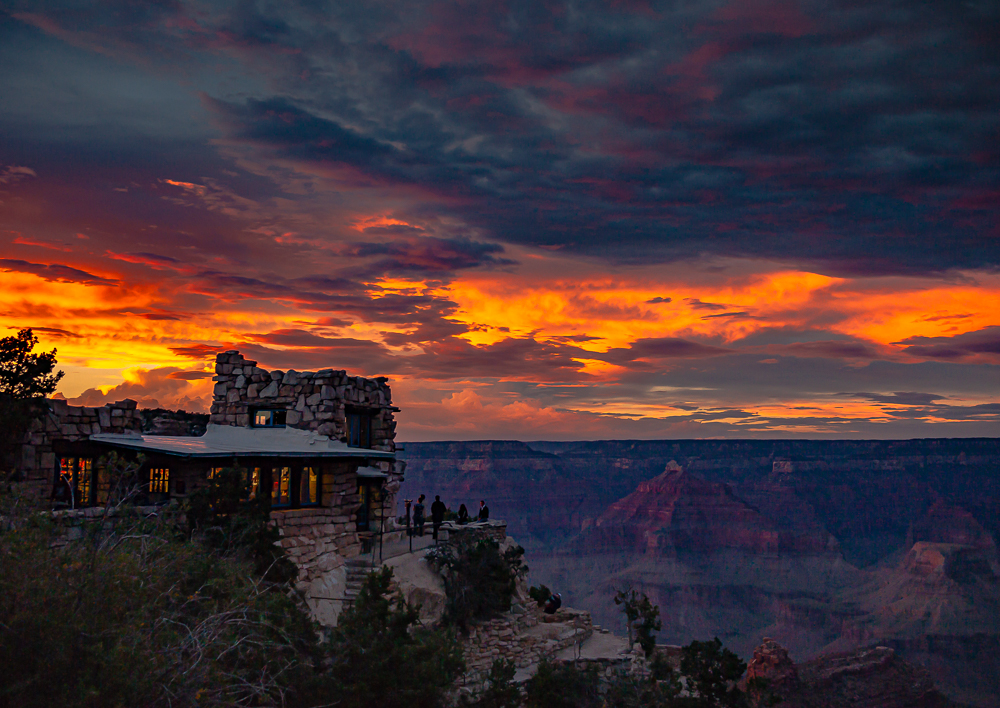
My initial intent was to capture the warm light of the setting sun over the Canyon looking toward the East as shown in the first of the above two images. Within three minutes the sky looking north over Lookout Studio intensified dramatically. I only had a minute to reframe my view and make several exposures before the light hitting the canyon formations disappeared completely. The second of these two images is iconic. But I could have easily missed it had I not been alert to the different possibilities.
Though the original plan was to photograph just the sunset and canyon without people or structures, I quickly realized how all of these elements went together to capture a magic moment. In gallery and museum exhibitions I titled this image “Cocktails at the Canyon” to reflect the early philosophy guiding the development of Grand Canyon Village, which was to attract people from urban areas to experience the immensity and power of raw Nature, but in comfort.
The last two examples of images with sunsets and landscapes as equally important elements have wild pink skies and red rock formations. The first one has many elements, while the second one is minimal consisting of one formation and a very wild and colorful cloud formation.
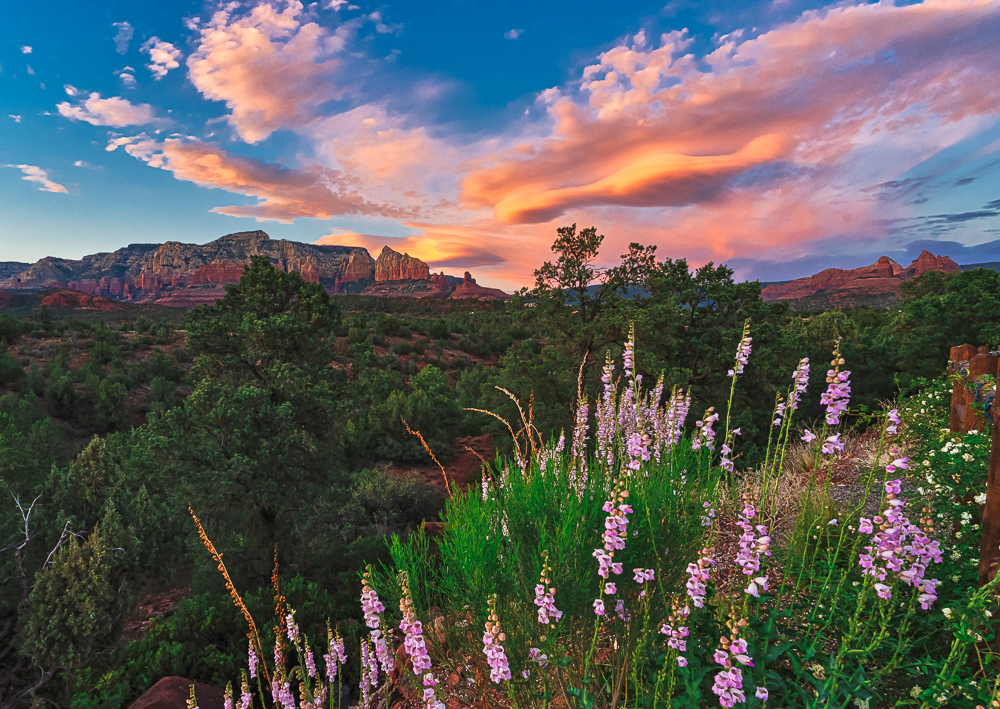
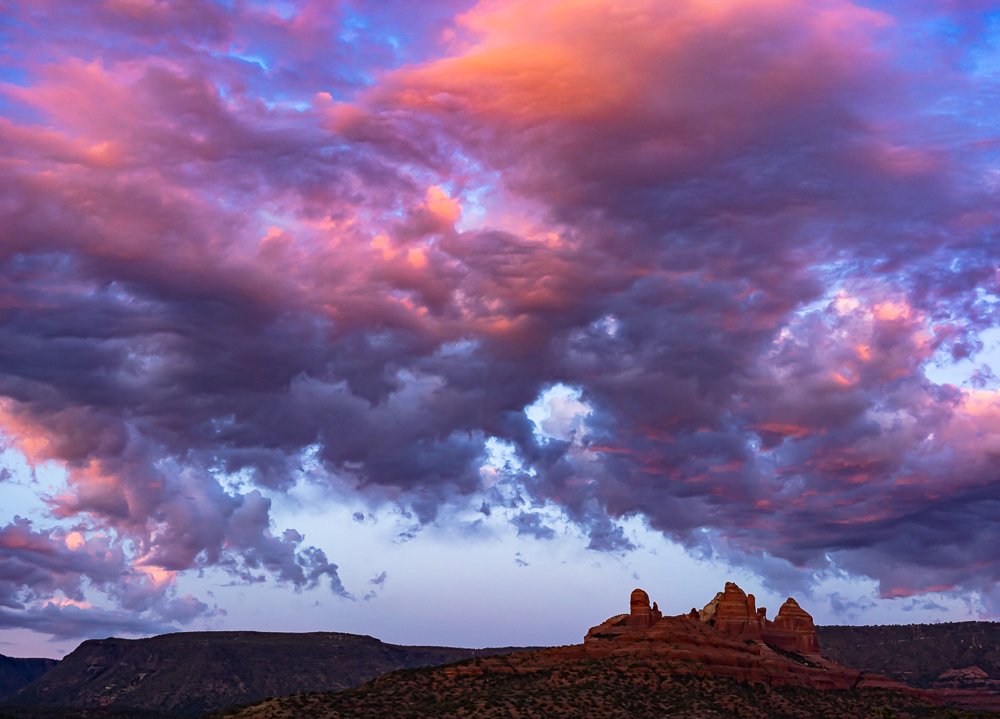
Regarding the second of these two image, an argument can be made that the sky is more important than the landform. I chose to consider them as equal, as there is good shadow detail in Carousel Rock, and the Mogollon Rim, which defines the southern edge of the Colorado Plateau, is in plain view behind the rock formation.
Sunsets as Mood Setters
Depending on the visual strength of the sunset, and also upon how much of it you choose to include in your photograph, the inclusion of sunset elements may serve as a way of adding mood to a landscape photograph. The following image of Cathedral Rock was taken from a rarely photographed perspective, as the sun sets behind the formation, requiring shooting into the sun. However, the dead tree, wild vegetation and eerie clouds reminded me of Halloween, which was coming up. In particular, the yellow flare and fiery orange sky, topped with a dark blue-gray cloud layer definitely said “Halloween”.
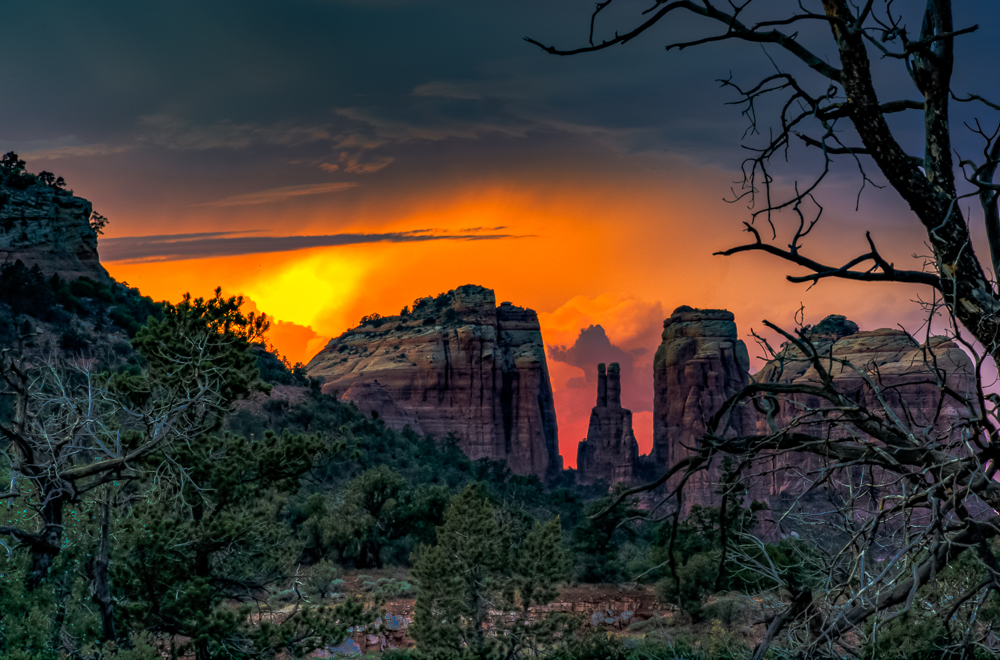
The next seven images in this category all exhibit definite moods, and in most cases because of the way that warm sunset tones project onto landform surfaces.
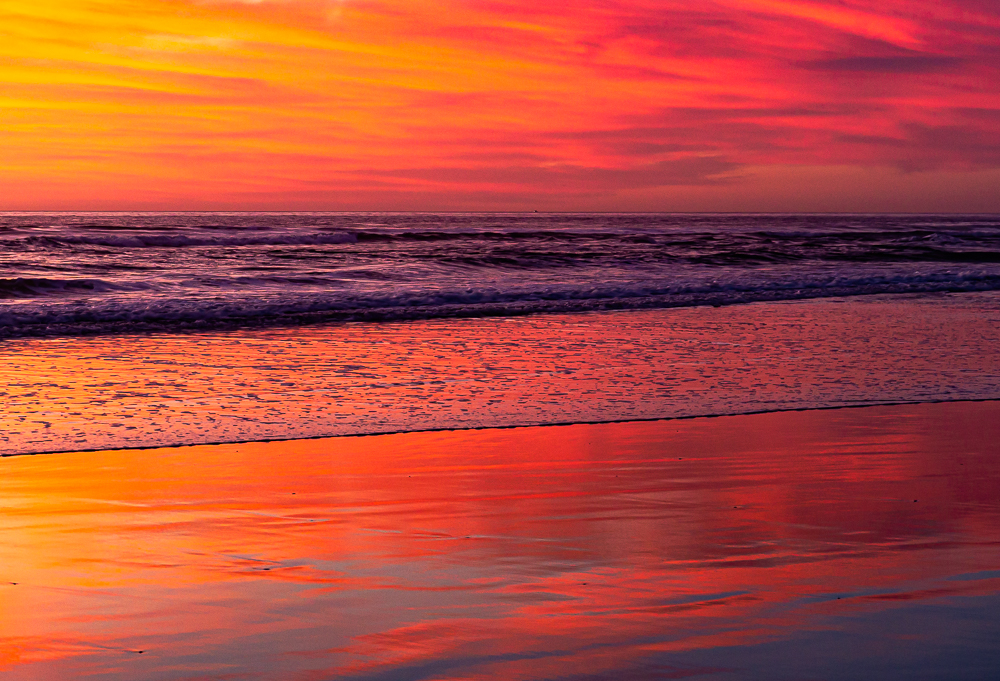
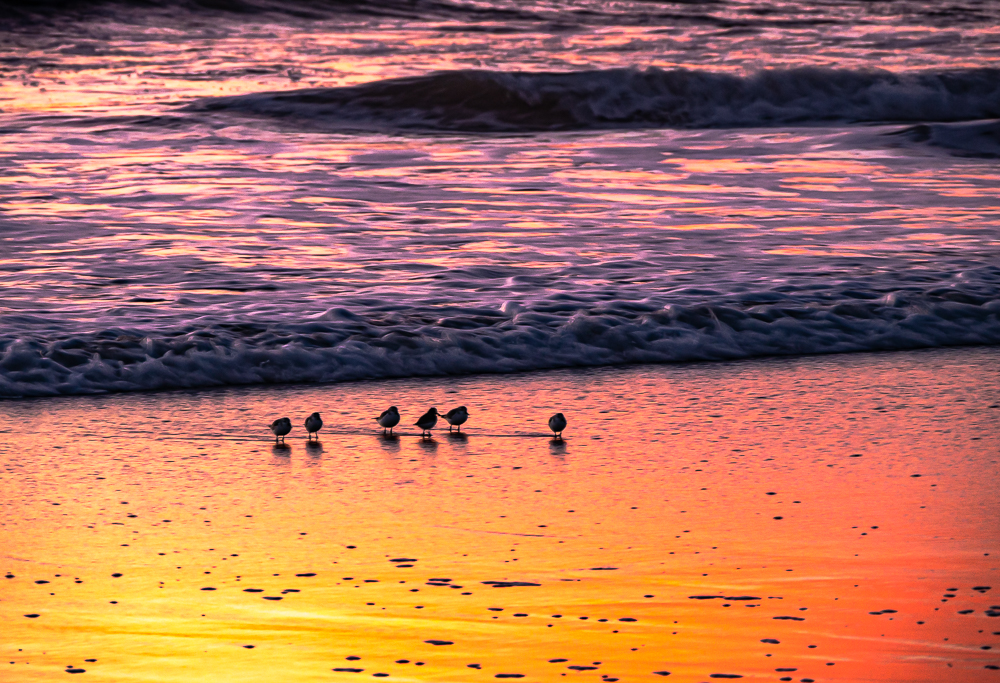
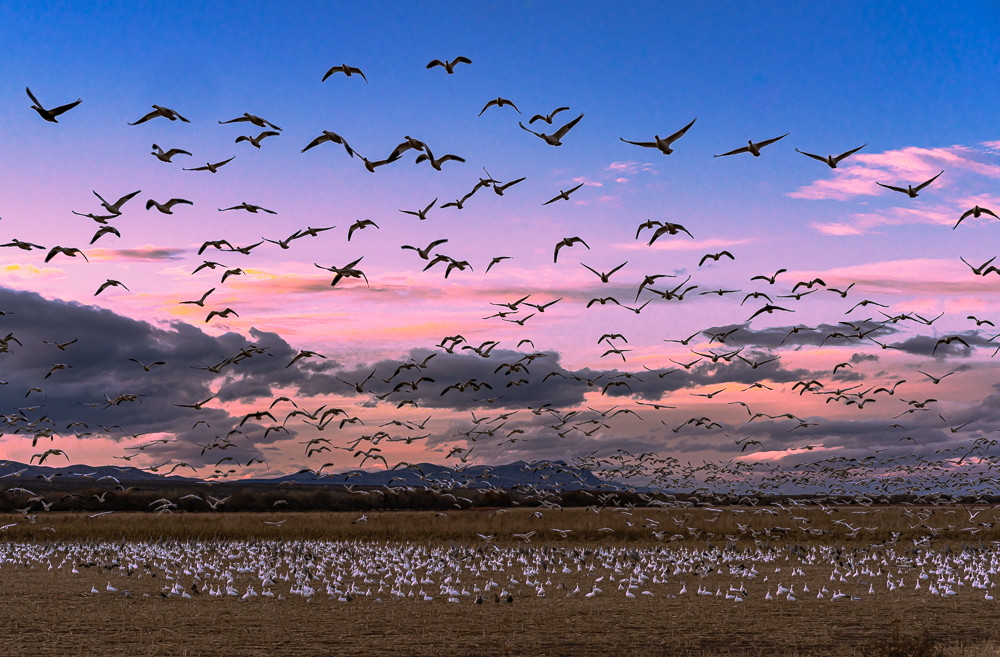
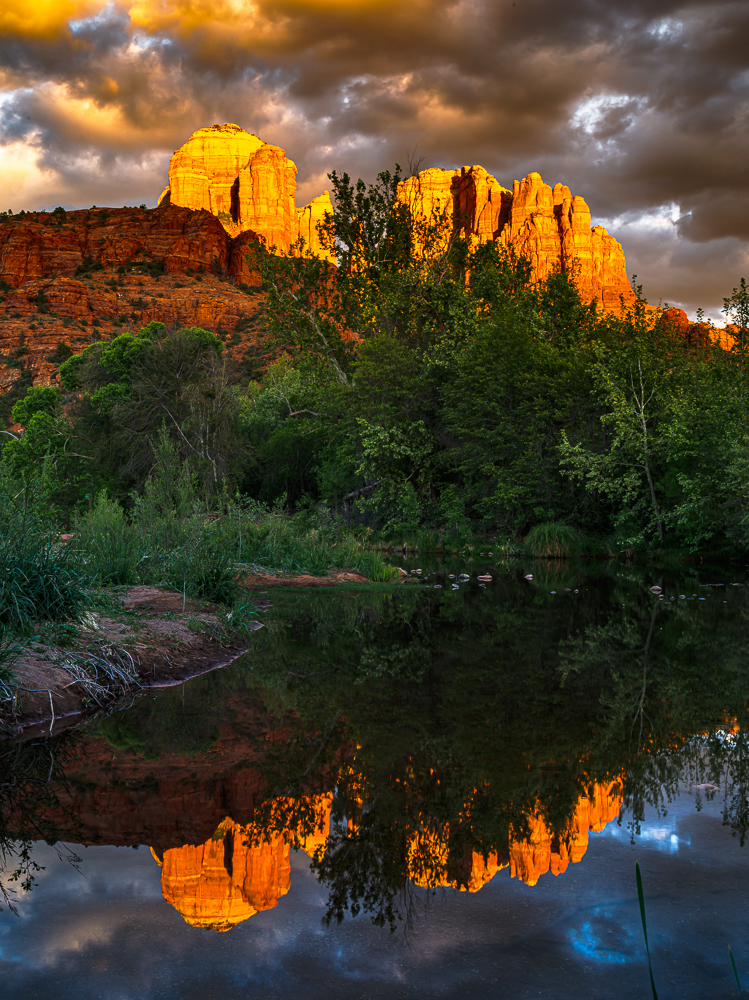
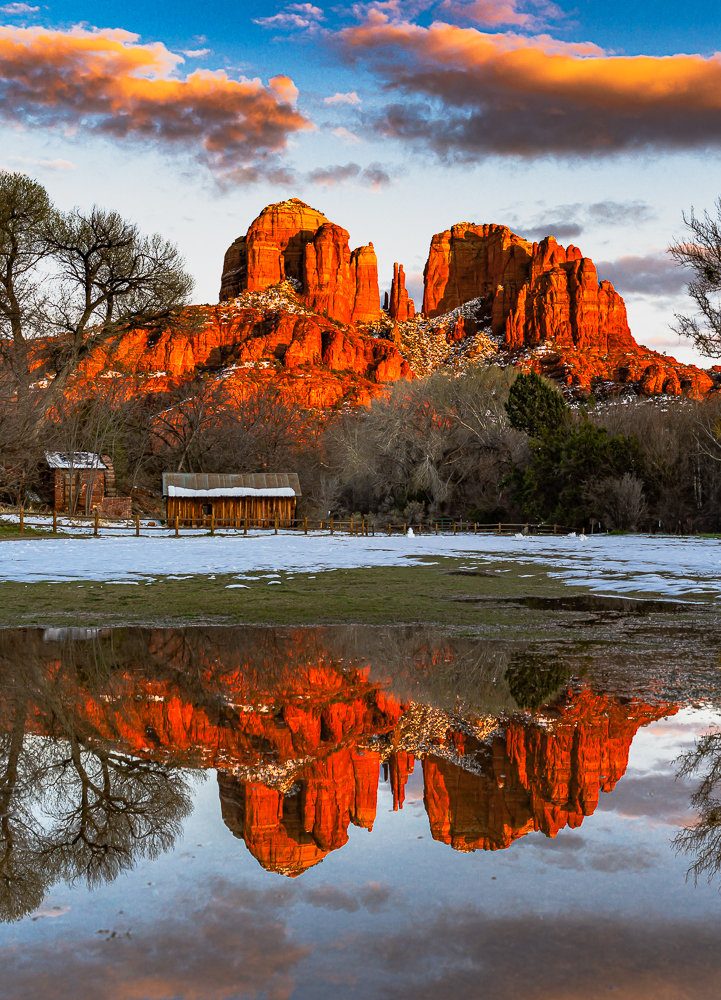
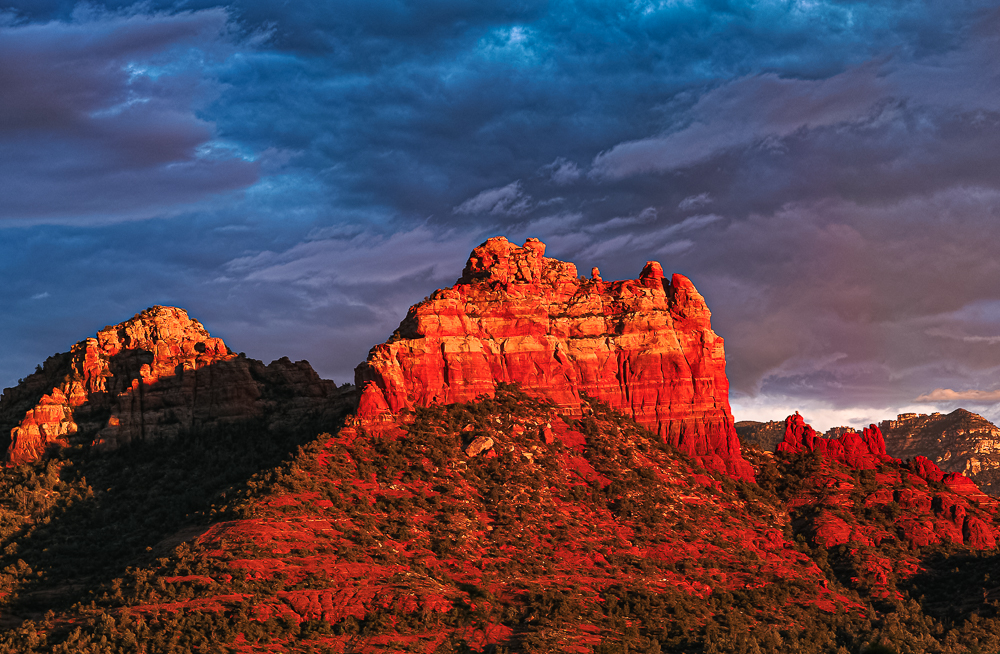
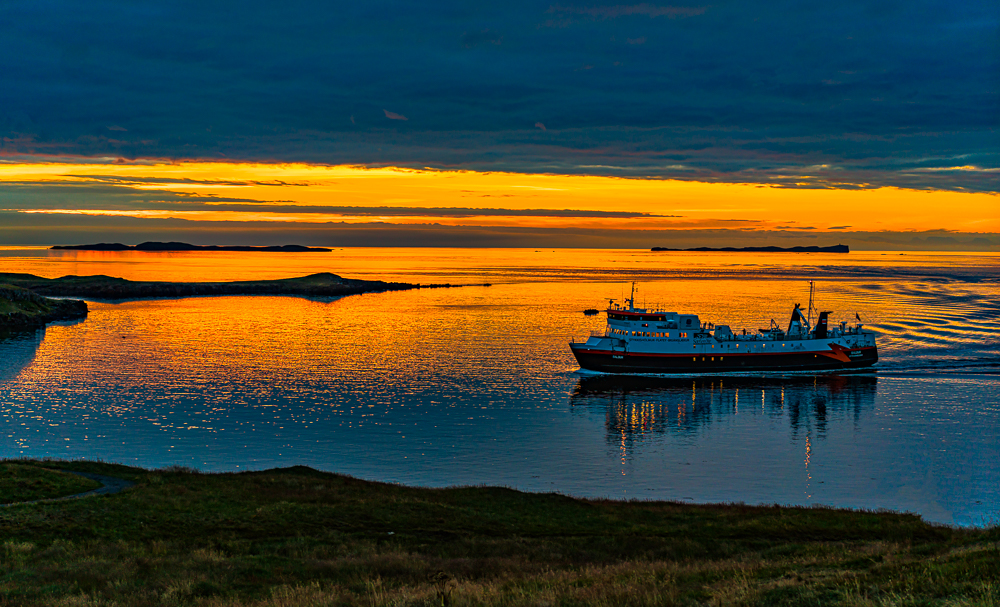
The last sunset category shows landscapes in which the setting sun provides accents to more classic landscapes.
Sunsets as Accents
There are also many scenes in which the setting sun plays a small roll in late afternoon and early evening landscape scenes. Not much commentary is needed in the first two examples.
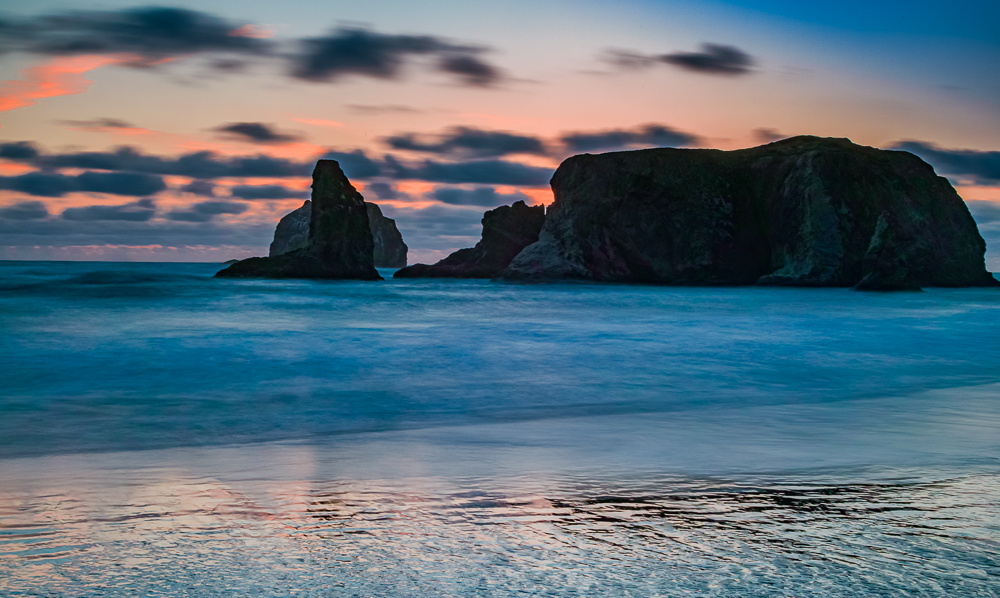
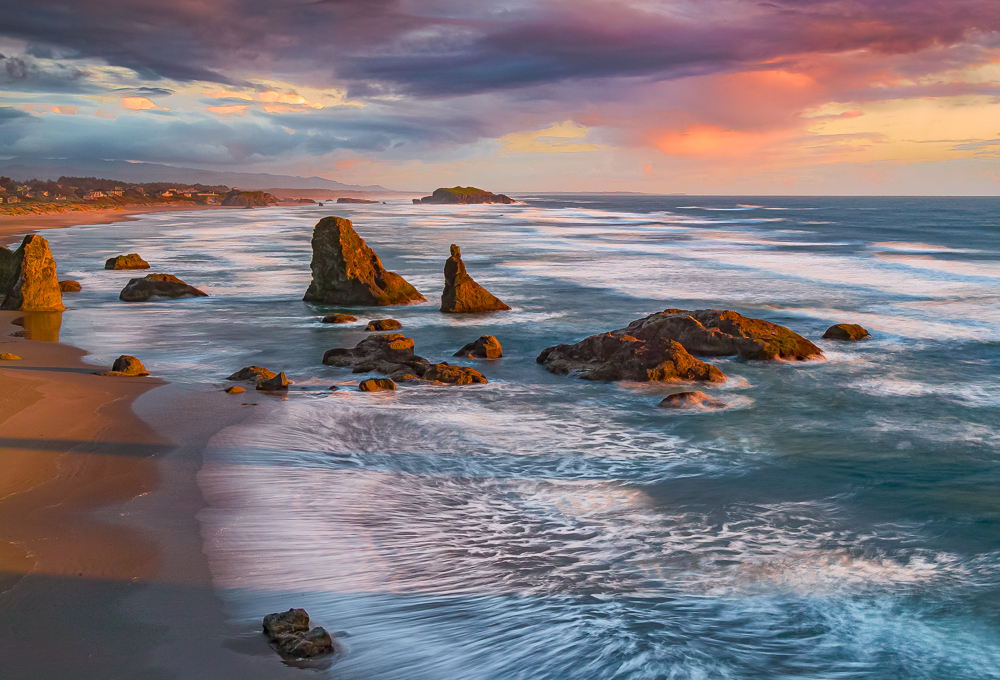
Sunsets play a minor but interesting roll in the final two images in this article, both of them involving the moon. In the first of these two, a rising near full moon shines through wispy sun-reddened clouds above the Mogollon Rim.
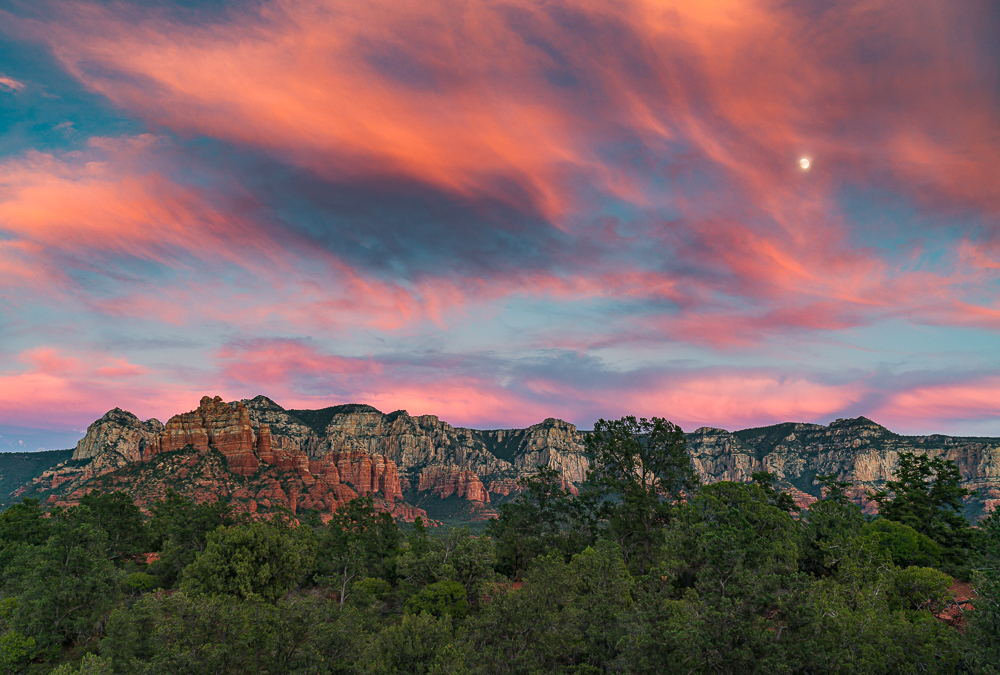
The last image is much more confined, and captures an almost full Super-Moon rising as the last rays of the setting sun warm Sedona’s red rocks. This was the only day in this lunar cycle that the two effects could be captured in the same image: the moon had just risen while the last rays of the setting sun warmed the rocks. On the next evening, the rising Super Moon would be full. But, the sun would already have set.
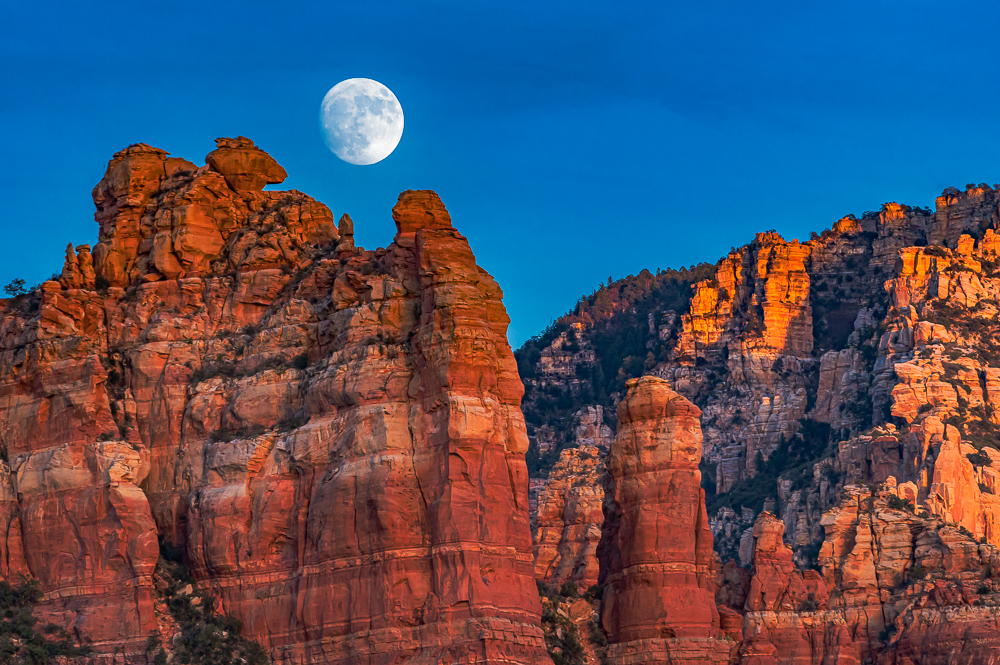
One final note: many of the observations and principles in this article would apply to sunrises as well. However, sunrises seem to change more quickly than sunsets, and require faster thinking and action to capture good images of these types. Or, maybe it’s just that I seem to move a little slower so early in the day.
Harvey Stearn
January 2021
Sedona, AZ
To see the scope and essence of Harvey Stearn's photographic art please visit www.CameraStops.com. Mr. Stearn began photographing Western landscapes and wildlife at the age of 13, spent 50 years pursuing his passion in the field and in the darkroom before fully converting to digital photography in 2002. He developed color prints as well as monochrome, but switched over to digital capture and editing in 2002. Though he was a top executive for two large scale land development and home building corporations, he always found time for his fine art photography which won many awards. His work was exhibited in art museums in Southern California and Arizona, and was also featured in billboard advertisements and published in magazines. Mr. Stearn served on the California Arts Council for nine years, including two years as Chairman and another two as Vice Chairman. In addition, he was the founding Chairman of the John Wayne Airport Arts Commission in Orange County, California. Mr. Stearn’s work was sold through Arizona galleries for 15 years. In recent years he wrote 33 illustrated articles for PhotoPXL.com and 14 articles for Luminous-Landscape.com. In 2013 he published a book entitled “In Search of the Old West” which has been widely acclaimed. He was a guest lecturer on photography on a cruise ship visiting Chile, Argentina, Uruguay and the Falkland Islands. His work was among the top 100 images printed in NANPA's Showcase publications in 2019 and 2020. Images have been edited and selected for two new books on Landscape photography which will be published in late 2024 and early 2025.






